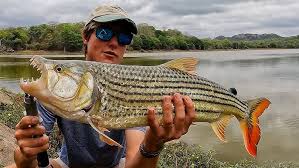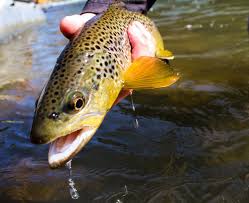John Cassim

Zimbabweans are often apathetic, fearful, and critical, a mindset stemming from past disappointments with heavily promoted but ultimately failed government programs. The Jatropha farming initiative, launched in 2006, serves as a prime example.
The multimillion-dollar processing plant in Mt Hampden, once touted as the first of its kind in Africa, became a white elephant, while government plans to transform farmlands into “oil fields” never materialized. Similarly, cannabis farming was introduced with great fanfare, but industry reports suggest that only a select few with international market connections have profited.
This history of failed promises has led Zimbabweans to question the viability of the fisheries and aquaculture industry, including the Presidential Community Fisheries Scheme, a government initiative aimed at improving food security, nutrition, and livelihoods. This scheme is overseen by the Fisheries and Aquatic Resources Department, headed by Director Milton Tinashe Makumbe.
To address these concerns, ConserveZim interviewed Mr. Makumbe. While the fisheries and aquaculture industry is projected to reach US$1 billion by 2030, many Zimbabweans consider this target ambitious.
“It’s a long process,” Makumbe explained. “We’ve done a lot of foundation building, put in place the right infrastructure, and are working with partners and private players across the value chain. The sector encompasses various areas: sport fishing, crocodile farming, aquaculture, and cage fisheries, among others. Sport fishing alone, for species like tiger fish and bass, has significant potential to contribute substantially to a billion-dollar economy.”
He continued, “These are complex issues bundled together to achieve that target. As a government, we’ve mobilized and coordinated efforts, identified opportunities within the sector, and aimed to level the playing field so people can maximize their potential and increase production.”
The 2024 FARD report indicates that the Zimbabwean fisheries and aquaculture industry is divided into several clusters, each contributing to the potential of reaching the billion-dollar mark.
Crocodile Farming: In 2023/24, 101,406 unprocessed skins were exported, valued at US$34,107,588.14. While processed skin exports are lower, they represent a market presence with growth potential.
France and Italy are the primary importers, followed by Singapore and Germany, with the USA, China, Japan, and Mexico also being off-takers. Notably, Zimbabwe accounts for the largest share (38.7%) of Nile crocodile skin exports since 2011, followed by South Africa (28.9%) and Zambia (14.8%).

Sport Fishing: This sector is primarily driven by tigerfish, with the Kariba Tiger Fishing Tournament as the main annual event, attracting anglers worldwide. Other species, such as largemouth bass, are also targeted. Catch and release practices contribute to conservation.
Based on club angler events (excluding social anglers), spending in this sector is estimated at: Bass – US$1,300,000; Kariba – US$950,000 (excluding holiday trips and houseboats); River Multi Species – US$1,000,000; Other Species – US$200,000; totalling US$3,450,000.
Presidential Community Fisheries Scheme: This scheme comprises two initiatives:
- Dam Stocking: This involves restocking 1,200 ZINWA-administered dams with 60 million fingerlings of indigenous and other fish species, including Nile Bream, Mozambique Bream, Green-Headed Bream, and Red Breasted Bream.
- Pond Stocking: This focuses on constructing and rehabilitating fish ponds, decentralizing fingerling production, providing extension services, developing markets, and investing in cold chain development. With a target of 70,000 stocked fishponds, the expected annual tonnage is 33,600 metric tons, valued at US$84 million (at US$2.50/kg).

Meanwhile, the SADC Secretariat, funded by the African Development Bank (AfDB), is implementing the PROFISHBLUE project. This project promotes sustainable fisheries management and blue economy growth in the SADC region, aiming to enhance food security, reduce poverty, and facilitate intra-regional trade.
The project’s four key components are: enhancing collaborative governance of transboundary fisheries; harmonizing policies and facilitating trade; building climate resilience and adaptability; and project management and coordination. Expected outcomes include increased fish production and productivity, benefiting over 459,000 people in the SADC region, and a significant increase in Africa’s share of the global market for processed fish products, targeting over 100,000 tonnes of cross-border fish trade.
Through support from the SADC Secretariat, Zimbabwe is expected to receive a three (3) ton refrigerated truck, through Mombasa in Kenya this February 2025.
The Zimbabwe beneficiary association is the Zimbabwe Fish Producers Association (ZFPA) as a way of ending post harvest losses that were witnessed prior to the birth of the Fisheries and Aquaculture Resources Department in 2020.
